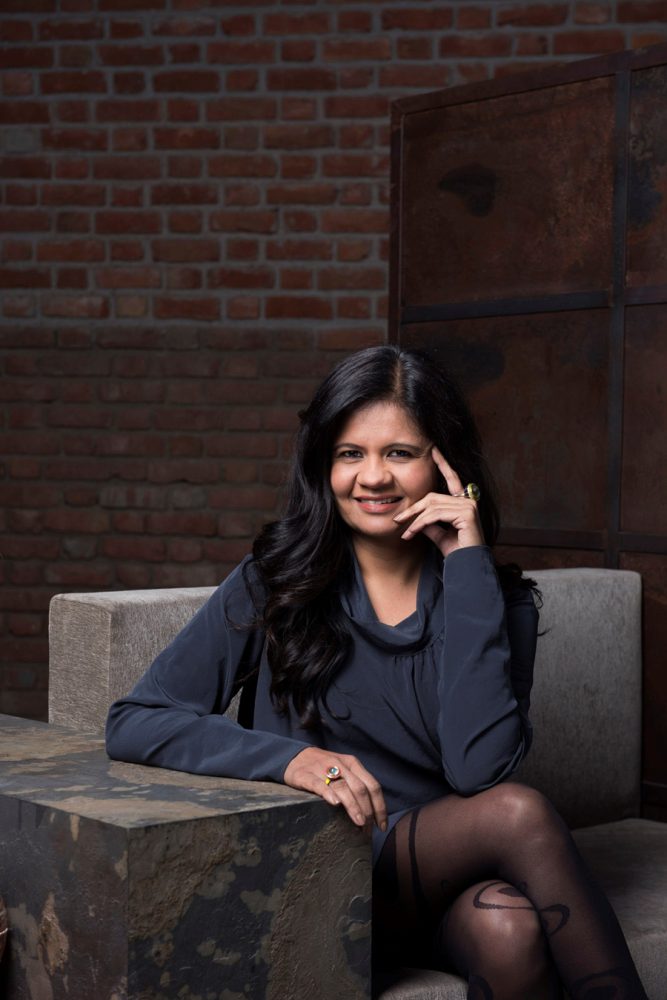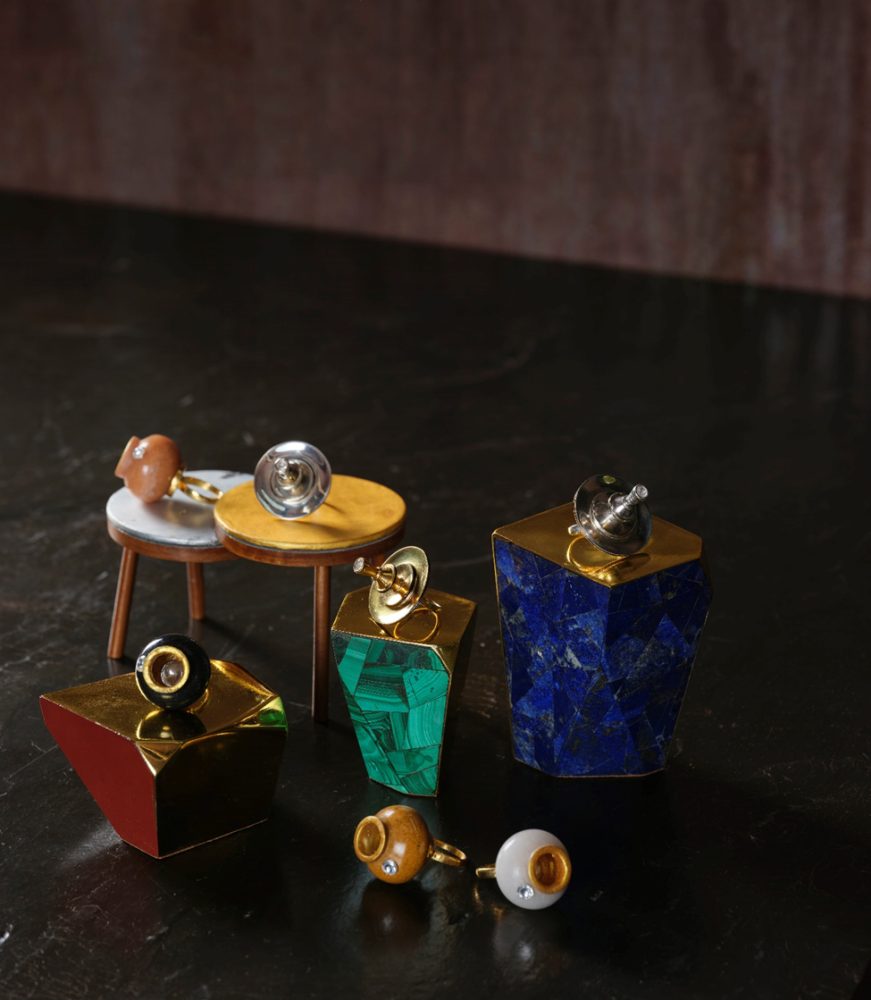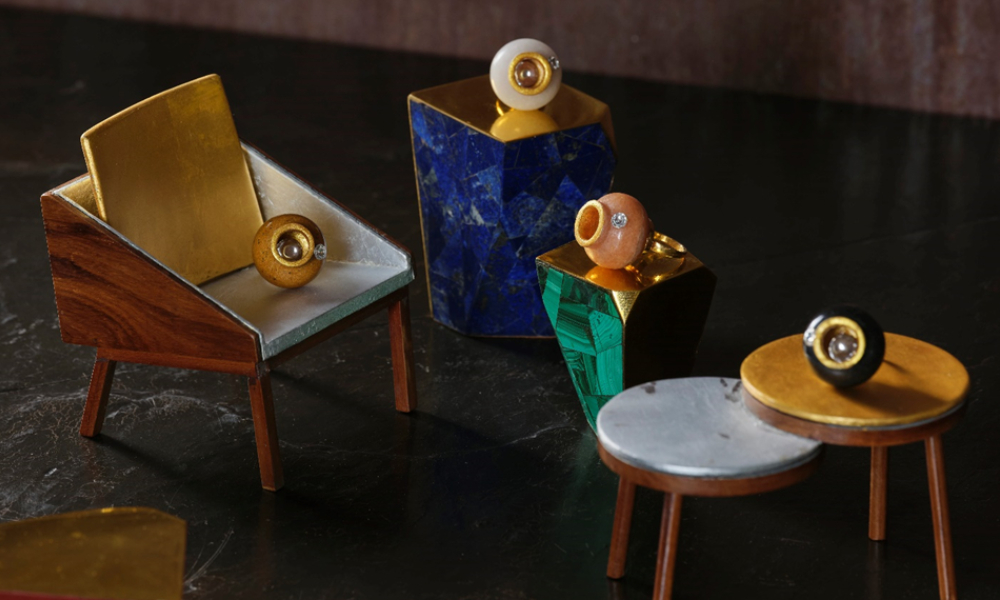There is a deep interconnectedness in the streams of various art forms that contemporary artists are exploring. They scale up or down to transform everyday objects into fine pieces of wearable art. One such artist is Gunjan Gupta, Founder of Studio Wrap, a New Delhi-based interior and furniture design studio. She has recently launched a whimsical yet striking collection of rings shaped like earthen pots, plates and more. Gupta, who also runs IKKIS, a product design brand where classical forms are reimagined as 21st-century home design objects, believes that bridging the gap between art and design requires balancing artistic expression with functionality and wearability.
Can you share the inspiration behind your transition from furniture art to jewellery design? What sparked your interest in exploring this new creative medium?
Trained as a product designer, my journey at Central Saint Martins in London prompted me to think conceptually about design from the outset. My Indian roots also allowed me to delve deeply into craftsmanship, instilling in me a level of attention to detail that has informed my work.
It is a common trend in the West for leading designers and artists to translate their designs into jewellery as miniature forms of wearable art. This naturally led me to experiment with miniaturised versions of my products that work as statement jewellery, allowing me to further explore form, texture, and composition on a smaller scale.

While my collectibles and furniture were gaining ground internationally, with it being exhibited at leading international design fairs like Design Miami, Art Basel, Fuorisalone in Milan, Design Days Dubai, and recently at Milan Design Week, as well as being collected by esteemed institutions like the Museum of Decorative Arts (MAD) in Paris and the Vitra Design Museum in Germany, I became interested in creating a more accessible version of these designs. The challenge of translating my furniture designs into wearable art sparked my interest in this new venture.
Your jewellery pieces are “quirky”. What influences or experiences contribute to the distinctive style of your designs? What materials have you used in the jewellery? And what’s the response from customers? Price points?
The distinctive style of my jewellery designs is influenced by a combination of factors, including my furniture design background, travels, and a deep appreciation of our Indian heritage and craftsmanship. I draw inspiration from everyday objects, traditional Indian motifs, and architectural elements, infusing them with a modern and eclectic twist. A lot of my work is rooted in memories of growing up in India. In terms of materials, I often use gold, silver, and semi-precious stones to create pieces that are both unique and accessible.
The response from customers has been overwhelmingly positive, with many appreciating the whimsical and playful nature of my designs. Each piece comes with a lot of personality and is rooted in Indian craft, and I believe that that is what has made it resonate with buyers.

As both an artist and a jewellery designer, how do you find the balance between artistic expression and wearable functionality in your creations?
Balancing artistic expression with functionality has always been crucial to my design process and to my practice. While I aim to create conceptually intriguing and visually striking pieces, I also prioritise comfort, wearability and functionality. This approach bridges the divide between art and design.
Each design undergoes meticulous testing to ensure it looks beautiful and feels comfortable to wear. It is about combining artistic vision with practical considerations.
The Matkaa ring for instance, is a dance of materials, silver and stone, evoking the symbol of the Matkaa or earthen pot while making it wearable and functional. Similarly, the Thaali Ring translates my design, the Vertical Thaali into a wearable ring handcrafted in pure silver, featuring a black nagina stone with a polki set, preserving the essence of the original design while ensuring wearable comfort and functionality.
Could you discuss the creative process behind developing your unconventional jewellery pieces?
The process behind my collectible design is quite straightforward. It all begins with a spark of inspiration—an idea, a motif, or a concept that intrigues me. I then embark on a journey of exploration, experimenting with materials, textures, and forms to bring that idea to life.
Each piece is a miniature form of large-scale utilitarian pieces, emerging from the extensive prototyping I have been engaged in over the past 20 years, dating back to my time at Central Saint Martins. They tell a story and embody a unique blend of creativity, craftsmanship, and innovation. My work is often influenced by the rich craft traditions of India, with a focus on techniques such as silver wrapping and Varka, which utilise 24-karat gold leafing on stone. Sketching, prototyping, and hands-on experimentation are integral parts of the process, allowing me to refine and evolve the design until it fully captures the essence of my vision.
Whether it is the chair and Matkaa-inspired rings, or Thaali stacks, these designs are reflected across various forms, from tableware to the GG Collectible jewellery.
Your work as a furniture designer is also notable. How does your background in furniture design influence your approach to jewellery design, if at all?
I enjoy experimenting with varying scales—large-scale pieces like furniture, medium-scale designs like tableware, and smaller-scale pieces like jewellery. My background in furniture design greatly influences my approach to jewellery design, particularly in craftsmanship, attention to detail, and the exploration of form and function. Both disciplines share a common thread of artistic expression and the desire to create objects that evoke emotion and intrigue.
For instance, the Ganga Jamuna ring is a miniaturised version of my Dining Throne, translating the complexities of Indian culture that I represent through the furniture piece down to a wearable accessory. Both pieces play with the reflection of gold and silver surfaces, resulting in a dynamic yet elegant expression.
While the scale and materials may differ, the underlying design principles remain consistent, allowing me to seamlessly transition between the two mediums and infuse my jewellery designs with the same level of creativity and craftsmanship as my furniture pieces.

In what ways do you see your art, jewellery, and furniture designs intersecting or influencing each other creatively?
The intersectionality of art and design has never been a deep division for me. The themes, motifs, and techniques explored in one medium often find expression in the others, creating a cohesive aesthetic language across my work. For example, a motif inspired by Indian architecture may manifest in a furniture piece and a jewellery design, each interpreting it uniquely. This interconnectedness allows for a continuous dialogue between my different creative pursuits, enriching the creative process and resulting in a more cohesive and harmonious collection.
Will we get to see more jewellery collections in the near future?
I am constantly exploring new ideas, experimenting with materials, and exploring new horizons in traditional craftsmanship and designs to create innovative pieces that resonate with my ethos. Each collection reflects my evolving aesthetic and artistic vision while staying true to the core values of craftsmanship, creativity, and storytelling.

